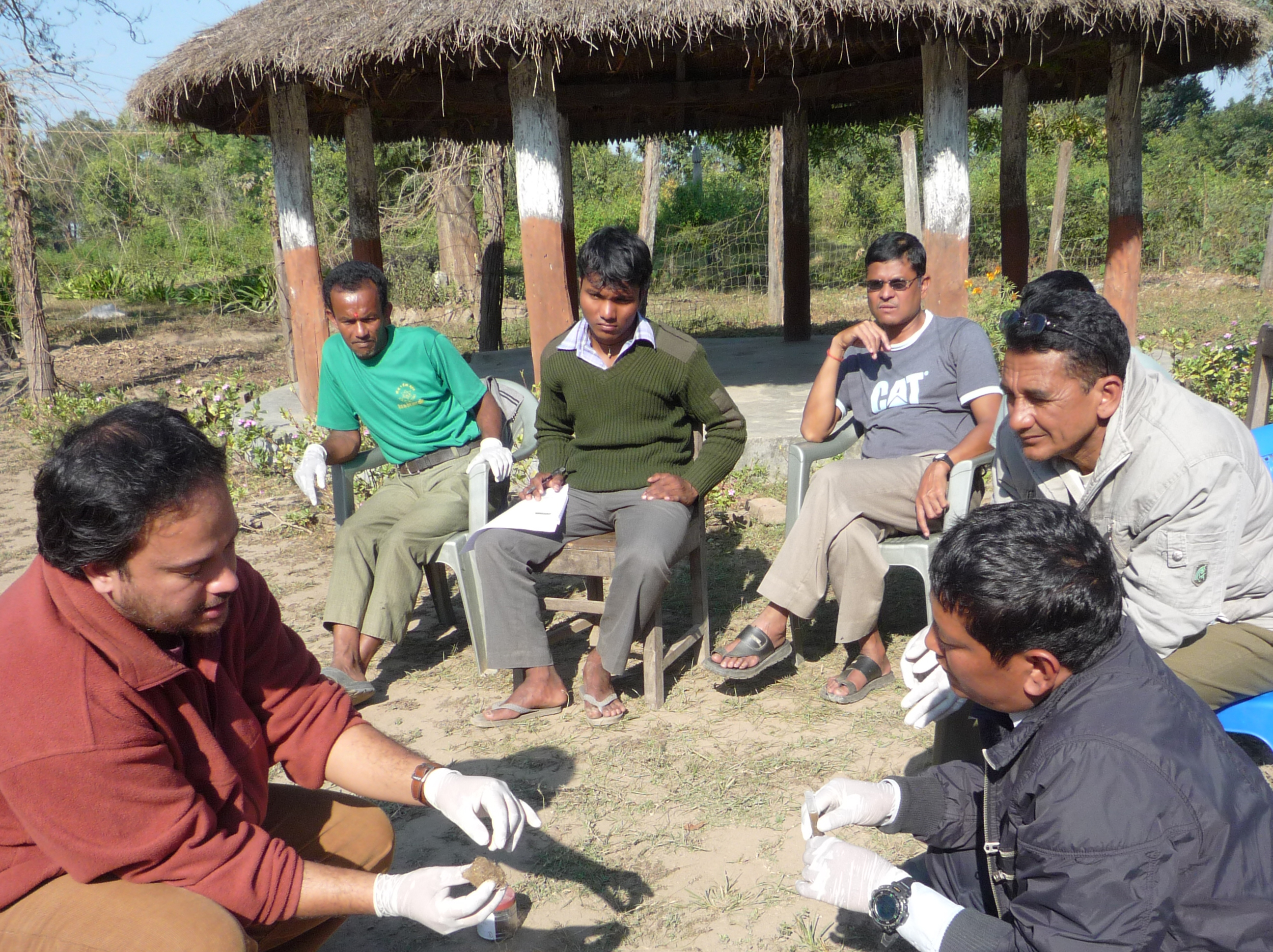Virginia Tech wildlife researchers explore DNA research to help save Nepal's Bengal tigers

Tigers are fast disappearing from the modern world. The 2010 tiger census in Nepal estmates that only 155 of the Bengal tiger subspecies still exist there. Conserving tigers is a top priority for the government of this South Asian nation.
To pinpoint the current population of wild Bengal tigers, understand their movements, and develop appropriate policies, the Nepal Tiger Genome Project has begun collecting samples of DNA from the big cats.
Marcella Kelly, associate professor of wildlife in Virginia Tech’s College of Natural Resources and Environment, and Kanchan Thapa of Kathmandu, Nepal, a doctoral student in wildlife science in the college, are deeply involved in the project, joining with colleagues from the Center for Molecular Dynamics–Nepal and the University of Idaho.
“This is the first genetic study of Bengal tigers in the region,” Kelly said. “We’re not only building a genetic database, we’re establishing a protocol and building competency for the use of DNA sampling techniques among the Nepali people.”
Thapa is doing fieldwork in the Terai Arc Landscape, an area of about 8,200 square miles along the border of southern Nepal and India — one of the few remaining tiger habitats on earth. The Bengal tiger population in the Terai region is found in three subpopulations interconnected by forests and cultivated areas populated by humans.
The landscape covers protected areas as well as nonprotected areas that are critical corridors for the movement of tigers between preserves. The tiger’s rarity and elusive nature have made it a difficult animal to study.
“We’re trying to determine the distribution and dispersal of tigers across the area,” Kelly said. “We’re worried they are not able to travel between protected areas — that they are staying only in the habitat where they were born. One park has a population of only seven or eight adult tigers, so the isolation and potential for inbreeding is a real concern.”
The two-year Nepal Tiger Genome Project, with $270,000 in funding from the U.S. Agency for International Development, is being conducted by the Center for Molecular Dynamics–Nepal in partnership with Nepal’s Ministry of Forest and Soil Conservation and in technical collaboration with Virginia Tech and the University of Idaho.
Kelly, who is known for her expertise in the design and analysis of studies using remotely triggered cameras and mark-recapture techniques, has trained project personnel in Nepal in this technology. Thapa has been monitoring tigers in Nepal for more than a year, using noninvasive methods such as camera traps and collecting fecal samples to extract tiger DNA.
Thapa’s work has an element of danger, Kelly said, but the danger is more likely to come from a charging elephant or rhino than a tiger.
“Tigers have certainly been known to kill people, but elephants and rhinos are much more likely to attack,” she said. “Thapa has had several encounters with wild elephants and escaped an avalanche in the region’s steep Churia hills. He’s doing sampling in remote areas and mostly traveling on foot.”
After Thapa completes data collection in Nepal this summer, he will return to Virginia Tech to analyze the data with Kelly in order to assess tiger and prey population size, connectivity, and habitat use. The results of the project will be shared with policy makers and experts worldwide.
Thapa’s work will have important implications for tiger conservation in Nepal, as this is the first detailed assessment of tiger ecology in the understudied, rugged Churia hills habitat. Although the habitat was previously labeled as suboptimal for tigers, this study has revealed that tigers are present in the Churia range.
The Nepal Tiger Genome Project will aid the government of Nepal in building the tiger genetic database, which will be used to track connectivity, gene flow, inbreeding, and poaching across the Terai, and thereby facilitate conservation of this critically endangered species.




